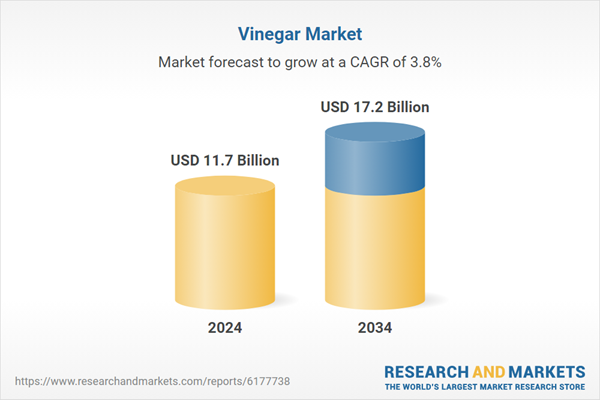Vinegar continues to evolve as a category fueled by growing consumer interest in natural, organic, and functional food products. Traditionally made through the fermentation of ethanol into acetic acid, vinegar now serves various roles in culinary use, food preservation, wellness, and even industrial applications. Shifts in consumer preferences are rapidly driving demand for specialty varieties, with particular focus on clean-label offerings and sustainability. The market is seeing significant traction in organic and fruit-infused vinegars, often enhanced with herbs or functional ingredients, catering to health-focused consumers and those seeking unique flavor profiles. The demand for premium and gourmet products is rising as consumers look for elevated cooking experiences. This trend is influencing product innovation and shelf presence in retail channels, alongside increasing incorporation into foodservice menus across casual and fine dining establishments. Vinegar’s ability to blend functionality, health, and flavor is making it a staple not only in kitchens but also in personal wellness routines, giving the market a steady long-term growth outlook.
The apple cider vinegar segment held 23% in 2024 and is projected to grow at a CAGR of 3.1% through 2034. This segment’s dominance stems from its strong association with natural health benefits and its versatile usage in dietary applications. Consumers continue to show increasing interest in wellness-focused ingredients, fueling demand for apple cider vinegar in both food and supplement formats. Its perceived benefits for digestive health and blood sugar support have made it a go-to for health-conscious shoppers, further reinforcing its leading position in the natural vinegar space.
The synthetic vinegar segment held 79.9% share in 2024 and is expected to grow at a CAGR of 3.6% through 2034. Its affordability and widespread availability make it the top choice for industrial and household cleaning uses. Lower production costs enable aggressive pricing, making it highly competitive in bulk and non-culinary applications. However, in the consumer food segment, increasing awareness and preference for natural alternatives may limit the long-term expansion of synthetic vinegar’s footprint.
United States Vinegar Market was valued at USD 1.7 billion in 2024, with an 85% share driven by product innovation and consumer adoption. Growing demand for organic, probiotic-enriched, and gourmet vinegars is accelerating market penetration. Health trends and clean-label product interest have significantly influenced buying patterns, driving sales of varieties like unfiltered apple cider and flavored balsamic vinegars. In parallel, the U.S. foodservice sector is also boosting demand for premium vinegar options, including artisan blends.
Key players shaping the Global Vinegar Market landscape include De Nigris, Aspall Cyder, Galletti, Shanxi Shuita Vinegar, Mizkan America, Burg Groep, Castelo Alimentos, Carl Kühne, The Kraft Heinz Company, Marukan Vinegar, ACETUM, Eden Foods, Fleischmann's Vinegar, Charbonneaux-Brabant, and Australian Vinegar. To reinforce their position, companies in the vinegar sector are focusing on product innovation and differentiation through organic certifications, clean-label ingredients, and new flavor infusions. Many brands are investing in expanding their natural and specialty vinegar portfolios to meet shifting consumer preferences. Strategies include scaling sustainable production practices and promoting vinegar’s health attributes through transparent labeling and wellness-oriented branding.
Comprehensive Market Analysis and Forecast
- Industry trends, key growth drivers, challenges, future opportunities, and regulatory landscape
- Competitive landscape with Porter’s Five Forces and PESTEL analysis
- Market size, segmentation, and regional forecasts
- In-depth company profiles, business strategies, financial insights, and SWOT analysis
This product will be delivered within 2-4 business days.
Table of Contents
Companies Mentioned
The companies profiled in this Vinegar market report include:- ACETUM
- Aspall Cyder
- Australian Vinegar
- Burg Groep
- Carl Kühne
- Castelo Alimentos
- Charbonneaux-Brabant
- De Nigris
- Eden Foods
- Fleischmann's Vinegar
- Galletti
- Marukan Vinegar
- Mizkan America
- Shanxi Shuita Vinegar
- The Kraft Heinz Company
Table Information
| Report Attribute | Details |
|---|---|
| No. of Pages | 292 |
| Published | September 2025 |
| Forecast Period | 2024 - 2034 |
| Estimated Market Value ( USD | $ 11.7 Billion |
| Forecasted Market Value ( USD | $ 17.2 Billion |
| Compound Annual Growth Rate | 3.8% |
| Regions Covered | Global |
| No. of Companies Mentioned | 16 |









